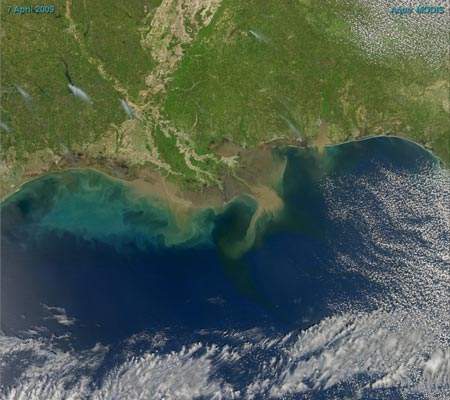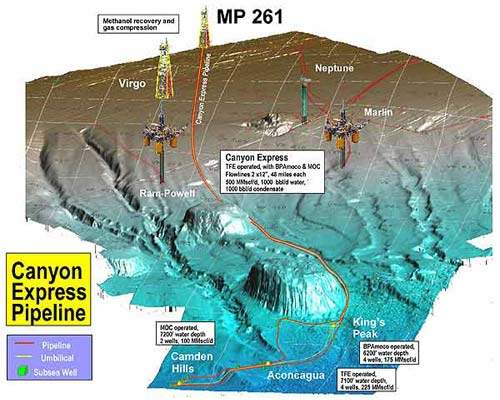The Longhorn Gas Field, situated in the Gulf of Mexico’s Mississippi Canyon (MC) Blocks 546 and 502, is located around 60 miles offshore the Louisiana coast. The field, situated at water depth of 730m, is around 195km southeast of New Orleans and is being operated by Eni with 75% working interest. Nexen Petroleum Offshore holds the remaining 25% non-operating working interest.
The Longhorn field was discovered in July 2006 and its first production was announced in November 2009. Production started just three years after its discovery.
During its initial years of production, the field is expected to produce approximately 200 million cubic feet of gas per day from subsea wells in a water depth of 2,500ft. The field will be tied to the Corral Platform, which is operated by Eni.
The Greater Longhorn Area, lying in the central Mississippi Canyon region, offshore Louisiana, includes the Corral Platform and Longhorn field.
Reserves and estimates
The pre-drill resource estimates at the Longhorn Gas Field were found to be between 60 and 250 billion of cubic feet equivalent of gas.
The reserves and exploration resources at the Greater Longhorn Area are estimated to be over 100 million.
Field development
Development of the Longhorn Gas Field included three subsea wells tied back to around 32km of the Crystal Platform, which was later renamed Corral. Eni started developing the Longhorn Gas Field project in April 2008 and completed in October 2009. The project was sanctioned in year 2006.
The field was developed in two phases. Phase I included a subsea well tied to the Corral Platform. The company decided to develop the $112.9m Phase II in December 2008, adding two more subsea wells tied to the platform. The peak rate is expected to vary in between 30 to 50 million cubic feet per day.
The development of the project at a water depth of around 2,400ft provides an opportunity for Eni to increase production and expand its presence in the Mississippi Canyon area.
Platform
The platform, equipped with a newly developed production and compression facility, is located in MC Block 365, and is approximately 20 miles northwest of the field in a water depth of 620ft. The conventional jacket structure platform has a processing capacity of 250 million cubic feet of gas per day and 6,000 barrels of oil per day.
The company sanctioned the Appaloosa development along with Longhorn Phase II in December 2008, which will also be tied to the Corral Platform.
The company plans to increase the liquid production capacity of the platform in sync with the Appaloosa oil field, which is expected to flow in January 2010.
Wells
Exploratory drilling started in May 2006 and was completed in August 2006. Appraisal well drilling at the field started in 2006, with three wells drilled.
The first appraisal well, situated in Block 502, was drilled using Transocean Amirante from August to October 2006. Eni had contracted Transocean Amirante for three years. The second well was drilled using Diamond’s Ocean America.
Nexen drilled an appraisal well at project over MC Block 546 and 502 during September 2007. The drilling resulted in identification of around 400ft of net gas pay in multiple sands.
The last appraisal well, situated in MC Block 502, was completed in late 2007. It penetrated deeper than the two previous wells drilled in 2006.
Drilling rig
Diamond Offshore’s Ocean America offshore rig was used for drilling in the Longhorn Gas Field. It can drill up to water depth of 5,000ft.
The field was drilled to a depth of approximately 4,228m in 740m of water in October 2007. Transocean’s Amirante was used for drilling the second appraisal well. Built in 1978, it can drill up to a water depth of 3,500ft.










